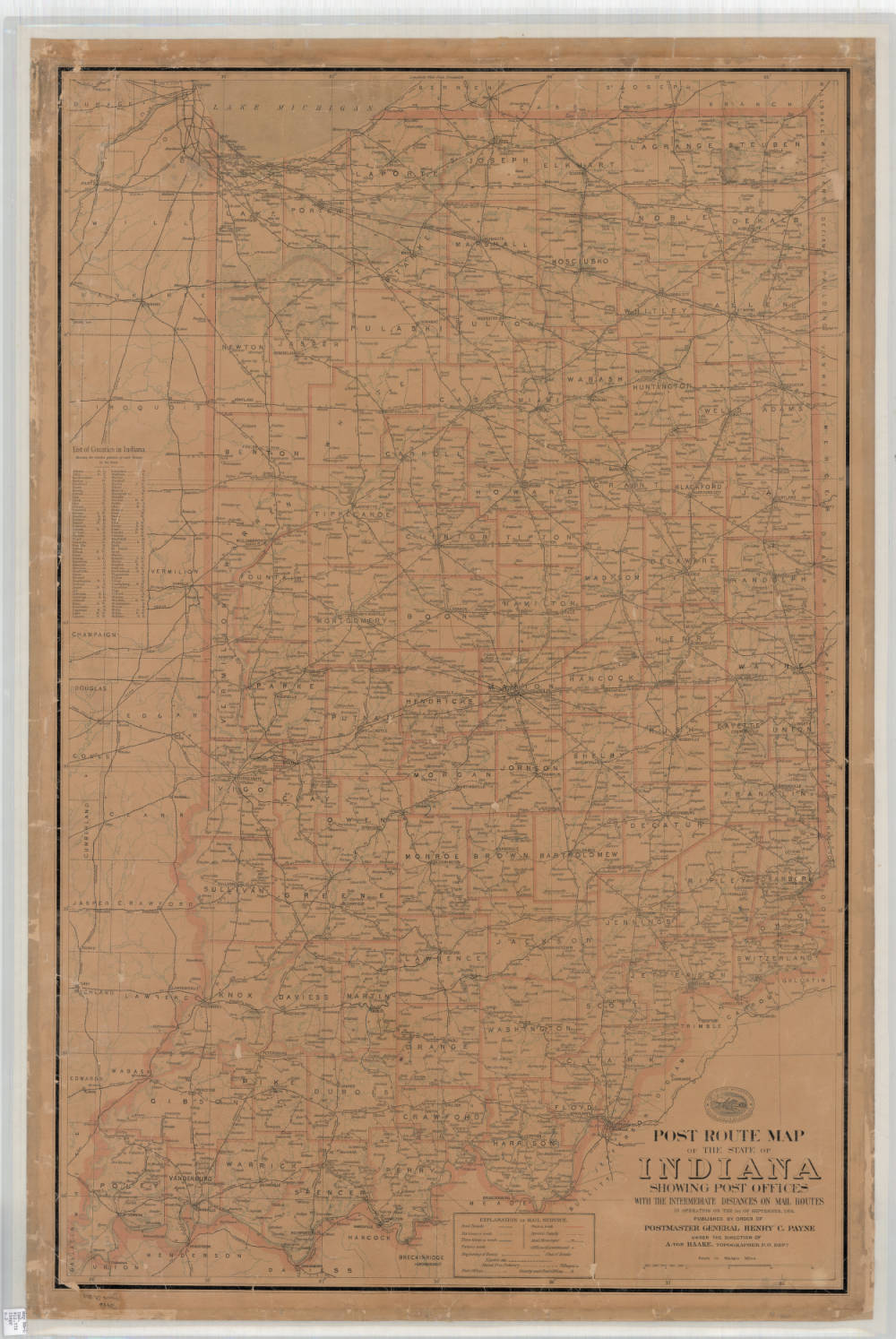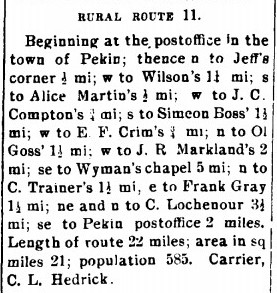Two regular questions that come across the reference desk can be answered using post office resources. The first common question is about a place name. The researcher may have a reference to a place, but that “place” is not a city or town. We often discover it’s a post office name. The Indiana State Library has a card file of post offices in Indiana. The card contains details including date the post office opened and when it may have been discontinued. These post office cards were used in making the handy reference book “From Needmore to Prosperity: Hoosier Place Names in Folklore and History” (Baker, 1995). Perhaps your library has this book.
The other request is to locate a modern address when all they know is the rural route, which is often the only detail a county farm directory would have listed. This is much more difficult to answer. There are a couple maps we can use to help find the mail route, but not the exact home. We have two sets of Post Office department maps by county, we have a set from about 1910 and another set from about 1940. The State Library has made the set from 1910 available online here. Additionally, a 1904 statewide post route map of Indiana is available online here.
 The 1904 post route map is nice because one can get a larger picture of the mail system than the county maps offer. The map shows post offices, mail routes and frequency of service. According to this map, most post offices and rural routes were getting mail up to six times a week; however, some little hamlets got mail only three times a week. Mail routes were added from year to year. Using a searchable newspaper database, one may be able to find detailed route descriptions. Take for example the Salem Democrat in 1903. They published the postmasters’ detailed reporting of how many houses are on the route, how many people are served and the length of the route. Here is an example of how Rural Route 11 out of Pekin is described.
The 1904 post route map is nice because one can get a larger picture of the mail system than the county maps offer. The map shows post offices, mail routes and frequency of service. According to this map, most post offices and rural routes were getting mail up to six times a week; however, some little hamlets got mail only three times a week. Mail routes were added from year to year. Using a searchable newspaper database, one may be able to find detailed route descriptions. Take for example the Salem Democrat in 1903. They published the postmasters’ detailed reporting of how many houses are on the route, how many people are served and the length of the route. Here is an example of how Rural Route 11 out of Pekin is described.
 Visit the USPS website for more history about rural routes. The development of the postal system is interesting and gives context to rural life and road improvements. Rural mail delivery was thought to help keep young people on the farm since they could receive reading materials and catalogs, perhaps diminishing the appeal of town. Additionally, rural postal routes are credited with road development throughout the nation. This article from the Fort Wayne News makes sure to lay the blame for lack of mail service on the road supervisor. Once the roads are improved, mail service will resume.
Visit the USPS website for more history about rural routes. The development of the postal system is interesting and gives context to rural life and road improvements. Rural mail delivery was thought to help keep young people on the farm since they could receive reading materials and catalogs, perhaps diminishing the appeal of town. Additionally, rural postal routes are credited with road development throughout the nation. This article from the Fort Wayne News makes sure to lay the blame for lack of mail service on the road supervisor. Once the roads are improved, mail service will resume.
 Finally, for the adventurous researcher, National Archives holds the records from the Post Office Department. Among the records are correspondence, reports and supporting documents regarding proposed rural route establishments and changes, filed by state and county. These unique tools will offer researchers geographic information for years to come.
Finally, for the adventurous researcher, National Archives holds the records from the Post Office Department. Among the records are correspondence, reports and supporting documents regarding proposed rural route establishments and changes, filed by state and county. These unique tools will offer researchers geographic information for years to come.
This post was written by Monique Howell, Indiana Collection supervisor.
